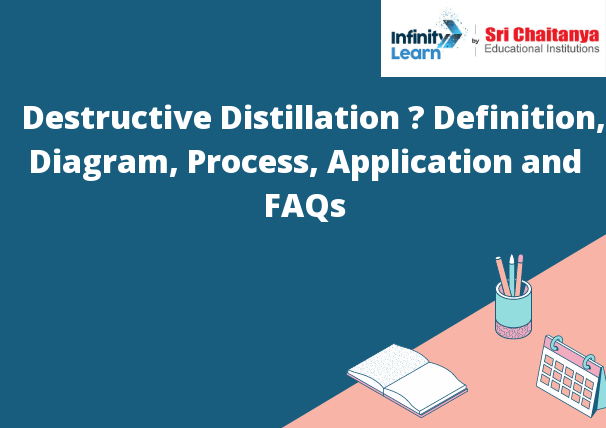Table of Contents
Destructive Distillation
Destructive Distillation – Definition: Destructive distillation is a process used to extract useful products from a material by heating it to the point where it breaks down into its component parts. The diagram below shows the basic process for destructive distillation.
The process begins by heating the material in a furnace. The heat causes the material to break down into its component parts. The vaporized component parts then flow into a condenser, where they are cooled and turned back into a liquid. The liquid is then collected and the process is repeated.
Destructive distillation is used to produce a variety of products, including ethanol, methanol, and gasoline. It is also used to produce coal tar, which is used in the production of synthetic rubber and pharmaceuticals.

What is Destructive Distillation?
Destructive distillation is a process of breaking down a substance into its component parts by heating it to a high temperature in the presence of a catalyst. The process is used to produce a variety of substances, including ethanol, methanol and benzene.
Destructive Distillation of Coal Diagram
The diagram illustrates the process of destructive distillation of coal. In the first step, the coal is heated in the presence of air to produce a gas called coal gas. In the next step, the gas is passed through a red-hot furnace to produce carbon monoxide and hydrogen. The carbon monoxide is used to produce carbon dioxide and methanol, while the hydrogen is used to produce ammonia and water.
Products Formed During Destructive Distillation
In destructive distillation, the products that are formed depend on the type of material that is being distilled. For example, if you are distilling wood, you will produce a variety of products, including methanol, acetone, and ethanol. If you are distilling crude oil, you will produce a variety of products, including gasoline, diesel fuel, and kerosene.
The Process of Destructive Distillation
- Destructive distillation is the process of heating a substance in order to break it down into its component parts. This can be done either physically or chemically. The component parts can then be used for other purposes.
- Destructive distillation is the process of breaking down a compound into its component parts by heating it to a high temperature. This can be done in a number of ways, including using a furnace, a kiln, or an open flame. The component parts can then be separated and purified.
- The process of destructive distillation can be used to produce a variety of different products, including ethanol, methanol, and acetone. Ethanol is a type of alcohol that is used as a fuel and as a solvent. Methanol is a type of alcohol that is used as a fuel and as a solvent. Acetone is a type of solvent that is used in the production of plastics and other industrial products.
- The process of destructive distillation can also be used to produce a number of different industrial chemicals, including ammonia, hydrogen sulfide, and carbon monoxide. Ammonia is a chemical that is used in the production of fertilizers and other agricultural products. Hydrogen sulfide is a chemical that is used in the production of sulfuric acid and other industrial products. Carbon monoxide is a chemical that is used in the production of carbon dioxide and other industrial products.
Application of Destructive Distillation
- The most common use of destructive distillation is in the production of ethanol from biomass. In this process, the biomass is heated until it decomposes, releasing ethanol and other gases. The ethanol can then be collected and used as a fuel or a beverage. Destructive distillation is also used to produce other industrial chemicals, such as ammonia and methanol.
- Destructive distillation is a process by which a material is heated to the point of decomposition, and the resulting gasses or vapors are collected and cooled. The most common use of destructive distillation is to produce ethanol from sources such as corn, sugarcane, or cellulose.
- The process of destructive distillation begins by heating the material to a temperature at which the molecules within the material break apart. In the case of ethanol production, this temperature is around 350 degrees Celsius. Gasses and vapors are then released from the material, and are collected and cooled. The cooled vapors are then condensed into a liquid, and the ethanol is collected.
- The use of destructive distillation to produce ethanol is a common and efficient way to produce the fuel. The process is able to use a variety of materials as a feedstock, and the ethanol that is produced is of a high quality. Additionally, the process is relatively efficient, and is able to produce ethanol at a relatively low cost.
Destructive Distillation
Destructive distillation is the process of breaking down a compound into its component parts by heating it to a high temperature in the presence of a limited amount of air or oxygen. The compound is heated in a closed container, which causes the compound to break down into its component parts. The component parts are then released from the container and allowed to cool.








